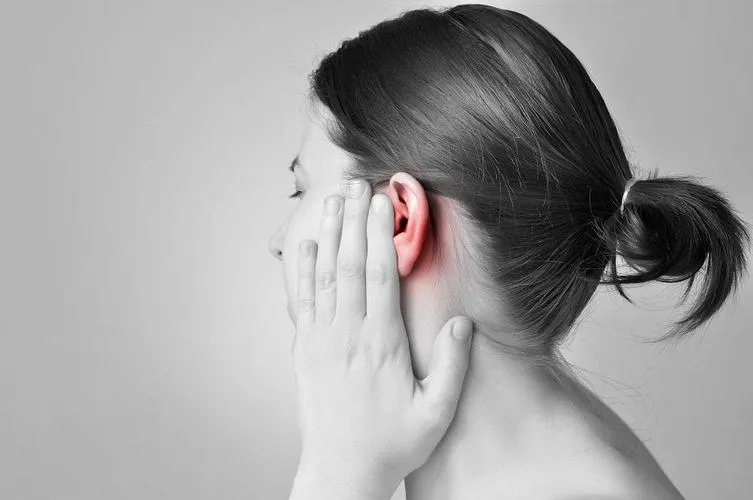Post mastoidectomy care for chronic ear infection
August 24, 2022
A mastoidectomy refers to a surgery that removes sick cells from your mastoid bone's air-filled cavities. The region of your skull right below your ear is called the mastoid. Cholesteatoma or ear infections that have progressed into your skull is frequently treated with mastoidectomy. It's also used during cochlear implant placement. If you get a chronic ear infection, contact an ENT doctor near you or visit an ENT hospital near you.
What is a mastoidectomy?
A mastoidectomy refers to a procedure in which damaged mastoid air cells are removed. These air cells originate from the hollow holes behind your mastoid — a sponge-like, honeycomb-shaped bone immediately behind your ear.
Why is a mastoidectomy performed?
A mastoidectomy is required when an ear infection (otitis media) progresses to the brain. Cholesteatoma is a noncancerous tumor that occurs beneath your eardrum due to persistent ear infections. A mastoidectomy is frequently done in conjunction with cochlear implant surgery.
A mastoidectomy with tympanoplasty will be performed if your eardrum has ruptured. A tympanoplasty is an eardrum operation. Even if your eardrum does not need to be repaired, tympanoplasty refers to the surgery behind it.
Is mastoidectomy a major procedure?
Your specific circumstances will determine the extent of your surgery. A simple mastoidectomy treats mastoid illness while keeping the ear canal and middle ear tissues unharmed.
Compared with a simple mastoidectomy, a canal-wall-up mastoidectomy or tympanomastoidectomy removes more bones. This allows your surgeon to access the middle-ear area beneath your eardrum, including your ossicles, the three tiny bones within your ear that carry sound waves. Your ear canal is completely unaffected by this operation.
When the disease has damaged your ear canal beyond repair or when removing your ear canal is essential for total disease elimination, a canal-wall-down mastoidectomy or tympanomastoidectomy is performed. The mastoid cavity or mastoid bowl is created by combining your ear canal and mastoid bone into a huge open space. To make future cleaning of your mastoid cavity easier, the aperture of your ear canal is routinely increased. This procedure, also known as a radical or modified mastoidectomy, is reserved for patients with significant disease or recurrent (repeating) disease after a less invasive procedure has failed.
What happens before a mastoidectomy?
Preoperative instructions will be given to you by your healthcare practitioner, and you should carefully follow them. You may need to stop taking certain medications for a short time in some instances. You'll also need to arrange for a trustworthy friend or family member to drive you to and from your appointment because mastoidectomy is conducted under general anaesthesia.
What happens during a mastoidectomy?
To guarantee your comfort during the treatment, you will be placed under general anaesthesia. Your surgeon will then do the following:
- To access your mastoid bone, make an incision behind your ear (to alter the look of your mastoidectomy scar, your surgeon will carefully place this incision).
- Open your mastoid bone with specialised equipment.
- In your mastoid, remove any diseased air cells.
- Stitches are used to close the wound.
- Gauze should be placed over the surgical wound.
- It normally takes two to three hours to complete a mastoidectomy procedure.
Is mastoidectomy painful?
During your mastoidectomy, you should experience no pain. Like any other surgery, a mastoidectomy can leave you feeling sore afterwards. Your ear may feel full or stuffy due to the incision behind your ear. Over-the-counter (OTC) pain medications like acetaminophen and ibuprofen can help you manage these adverse effects. Your surgeon will also provide you with postoperative advice to assist you in staying comfortable during the recovery period.
What happens after a mastoidectomy?
You will wake up in recovery after your mastoidectomy. Your medical team will keep an eye on your development, and you'll be able to return home when you're ready. Your surgeon will provide specific postoperative instructions. It is critical to pay attention to these.
What are the advantages of a mastoidectomy?
Chronic ear infections can be treated and their recurrence reduced by a mastoidectomy (return). Furthermore, the surgery can help avoid major cholesteatoma consequences like:
- Hearing loss
- Vertigo
- Dizziness
- Facial nerve damage
- Labyrinthitis
- Meningitis
- Brain abscess
What are the risks or complications of a mastoidectomy?
There are risks in every procedure. Following a mastoidectomy, you may have the following complications:
- Hear loss in the inner ear (sensorineural hearing loss)
- Any damage to the facial nerves can result in facial weakness or paralysis.
- A flavour change that might continue for months (dysgeusia)
- Your ear is ringing (tinnitus)
Conclusion
A mastoidectomy may be the best course of action if you have recurrent or repeat ear infections and issues that emerge as a result of them. Discuss your alternatives with your healthcare practitioner. They'll be able to inform you whether or not a mastoidectomy is a viable option for you. Mastoidectomy surgery can help you get rid of an infection, which will improve your general health and quality of life.
Request an appointment at Apollo Hospital. Call 18605002244
It takes six to twelve weeks to recuperate from a mastoidectomy. In one to two weeks, most people may return to work and other normal activities.
Mastoidectomy is generally successful, but the prognosis varies depending on the cause of the surgery and the type of mastoidectomy done. The major purpose of mastoidectomy is to eradicate the infection, leading to subsequent issues. It's vital to remember that some hearing loss is common with radical or canal-wall-down mastoidectomy.
If you've had a mastoidectomy recently, consult your doctor if you've experienced any of the following symptoms: ● A fever around 100 F or higher ● Heavy ear bleeding or discharge ● Facial weakness ● Dizziness ● Hearing loss
NOTICE BOARD
CONTACT US
CONTACT US
 Book Appointment
Book Appointment


.svg)
.svg)
.svg)
.svg)








